#Ozone Layer Depletion
Text
The Ozone Layer Depletion – Effects and Causes
The Ozone Layer Depletion – Effects and Causes
Ozone Layer Depletion was a problem that started haunting environmentalists and the common people alike since the 1980s. In this blog, let me show you what is the ozone layer, its role, causes and effects of its depletion.
What is the Ozone Layer?
The ozone layer is an area of the earth’s stratosphere that contains high levels of ozone (O3) and protects the planet from the sun’s harmful…
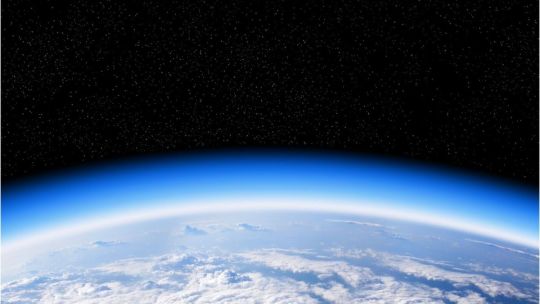
View On WordPress
#effects of ozone layer depletion#Effects of ozone layer depletion on environment#Importance of ozone layer#Montreal Protocol#ozone layer depletion#ozone layer depletion causes#ozone layer depletion effects#ozone layer hole#Vienna convention#what cause ozone layer depletion#what ozone layer is
0 notes
Text
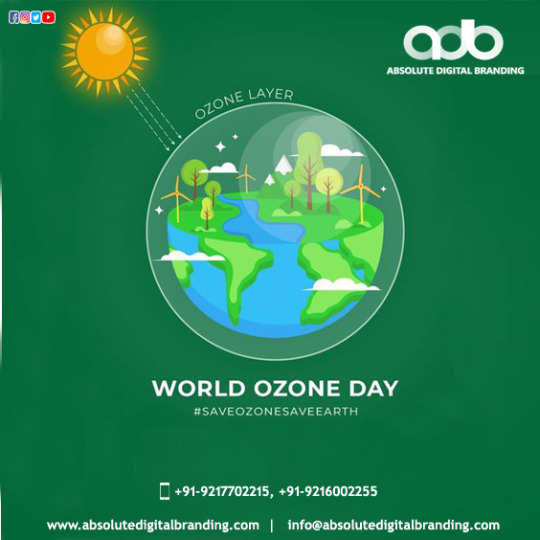
International Day for the Preservation of the Ozone Layer is celebrated on September 16 designed by the United Nations General Assembly. This designation had been made on December 19, 2000, in commemoration of the date, in 1987, on which nations signed the Montreal Protocol on Substances that Deplete the Ozone Layer.
#ozone #ozoneday #Marktingstrategy #SEObrandingagency #SEO #PPC #SMO #SMM #SeoCompany #digitalmarketingcompany #socialmediamarketingcompany #absolutedigitalbranding #searchengineoptimization #advertisingagencyinmohali #facebook #twitter #marketingonline #internetmarketing #follow #digitalagency #marketingagency #motivation #digitalmarketingtips #onlinebusiness #websitedesign #marketingonline #brand #ABSOLUTEDIGITALBRANDING #BEST #PUBLIC #RELATION #AGENCY #IN #CHANDIGARH #MOHALI #PUNJAB #NORTH #INDIA #onlinebranding #branding360degree #SEObrandingagency #websiteranking #websitetrafic #Digitalmarketing #OnlineAdvertising #instagrammarketing #web #technology #marketingonline #content #instagrammarketing #advertisingagency #web #buildingrelationships #globally #customer #internetbranding-at Absolute digital Branding & Public relations.
#International Day for the Preservation of the Ozone Layer is celebrated on September 16 designed by the United Nations General Assembly. Thi#2000#in commemoration of the date#in 1987#on which nations signed the Montreal Protocol on Substances that Deplete the Ozone Layer.#ozone#ozoneday#Marktingstrategy#SEObrandingagency#SEO#PPC#SMO#SMM#SeoCompany#digitalmarketingcompany#socialmediamarketingcompany#absolutedigitalbranding#searchengineoptimization#advertisingagencyinmohali#facebook#twitter#marketingonline#internetmarketing#follow#digitalagency#marketingagency#motivation#digitalmarketingtips#onlinebusiness#websitedesign
2 notes
·
View notes
Text
In the upper atmosphere, the NO formed from photolysis of NO2 reacts with O3, causing its depletion.
"Chemistry" 2e - Blackman, A., Bottle, S., Schmid, S., Mocerino, M., Wille, U.
#book quote#chemistry#nonfiction#textbook#atmosphere#upper atmosphere#nitric oxide#photolysis#photochemistry#nitrogen dioxide#ozone#chemical reactions#ozone depletion#ozone layer
0 notes
Text
Ozone layer recap – the hole story in brief.

The ozone layer is an important part of our atmosphere, absorbing almost all of the sun’s harmful ultraviolet (UV) radiation.
Long-term exposure to high levels of UV-B, or any exposure to UV-C, is harmful to human health and damaging to most animals, plants and microbes. In short, the ozone layer plays a crucial role in protecting all life on Earth.
In the 1970s, scientists first hypothesised that the ozone molecules (O3) which form the ozone layer could be destroyed by the chlorine from chlorofluorocarbons (CFCs), man-made chemicals which were used in thousands of products around the world, from air-conditioners and refrigerators to aerosol sprays, asthma inhalers and building insulation.
Over the following years, evidence supporting their concerns grew and when scientists discovered a hole in the ozone layer above the Antarctic in the mid-1980s, the international community was spurred into action. The Montreal Protocol was signed in 1987, with the explicit aim of protecting the ozone layer by phasing out ODS.
To this day, the Montreal Protocol is the only United Nations environmental treaty to be ratified by every country in the world and it is defined by a catalogue of successes:
99 per cent of the ODS controlled under the Protocol have been phased out
the ozone layer is recovering and, if the Protocol continues to be fully implemented, should return to 1980 levels by 2066
hundreds of millions of people worldwide will be protected from skin cancers and eye cataracts, resulting in about $1.8 trillion in global health benefits
as ODS are potent greenhouse gases, their phase-out has already avoided hundreds of billions of tonnes of carbon-dioxide equivalent emissions
in 2016, the Montreal Protocol formally became a climate treaty with the adoption of the Kigali Amendment, a global agreement to phase down production and consumption of hydrofluorocarbons (HFCs). HFCs do not deplete ozone but are climate-harming gases used as substitutes for ODS. Successful implementation of the Kigali Amendment will avoid up to a half a degree of warming by the end of the century.
The Montreal Protocol has done much over the past 36 years to secure its crown as the world’s most successful environmental treaty, but while its success deserves to be celebrated, its work is far from done.
The spirit of increasing ambition that has put the recovery of our ozone layer back on track, and has taken action to limit the climate impact of HFCs, now needs to be reinvigorated once more to address the next set of challenges lining up against it.
#ultraviolet radiation#ozone levels#ozone layer protection#ozone depleting substances#carbon dioxide#hydrofluorocarbons (HFCs)#carbon dioxide equivalent (gtco2e)#ozone molecules (O3)#methane (ch4)#montreal protocol
0 notes
Text

International Day for the Preservation of the Ozone Layer is celebrated on September 16 designed by the United Nations General Assembly. MEDIAHEIGHTSPRCOM#best#public#relation#agency#in#chandigarh#mohali#punjab#north#india#buildingrelationships#globally#customer#internetbanding — at media heights #smo#branding#facebook#twitter#marketingonline #brand #searchengineoptimization #internetmarketing #follow #digitalagency #marketingagency #motivation #digitalmarketingtips #onlinebusiness #websitedesign #marketingonline #brand #searchengineoptimization #content #instagrammarketing #advertisingagency #web #technology #onlinebranding #branding360degree #SEO #SEObrandingagency #websiteranking #websitetrafic #Digitalmarketing #mediaheights #OnlineAdvertising #instagrammarketing #advertisingagency #web #marketingonline #brand
#in commemoration of the date#in 1987#on which nations signed the Montreal Protocol on Substances that Deplete the Ozone Layer.#ozone#WorldOzoneDay#digitalmarketingtips#MEDIAHEIGHTS#digitalmarketingcompany#searchengineoptimization#content#instagrammarketing#advertisingagency#web#MEDIAHEIGHTSPRCOM#best#public#relation#agency#in#chandigarh#mohali#punjab#north#india#buildingrelationships#globally#customer#internetbanding — at media heights#smo#branding
1 note
·
View note
Text

It's September 16th, UN International Ozone Preservation Day. On this day in 1987, the United Nations sponsored the Montreal Protocol on Substances that Deplete the Ozone Layer. This annual observance highlights the threats to our atmosphere's ozone layer, its relationship with climate change, and the steps we can all take to protect it from further damage.
In 1913, French physicists Charles Fabry and Henri Buisson discovered the ozone layer while measuring the Sun's radiation. Later research revealed that this fragile layer of ozone gas in our atmosphere protects the Earth from harmful ultraviolet rays, thus helping to preserve life on our planet.
In the late 1970s, scientists realized that human activity was destroying the ozone layer. They discovered a hole that was caused by ozone-depleting gases often found in air conditioners and refrigerators. Evidence of this ozone depletion manifested itself in many ways, including destruction of plants and ecosystems and increased incidences of skin cancer.
The international community rose to the occasion. In 1985, the United Nations adopted a formal declaration, the Vienna Convention for the Protection of the Ozone Layer, and then two years later put the Montreal Protocol into effect. Thanks to these successful efforts, the ozone layer is now healing. On September 16th, 2009, the Vienna Convention and the Montreal Protocol became the first United Nations treaties in history to achieve universal ratification. You see, we can work together. ☮️ Peace… Jamiese of Pixoplanet
#jamiese#pixoplanet#ozone layer#ozone#world ozone day#ozone day#earth#climate change#global warming#save earth#ozone depletion#environment#protect ozone#save ozone layer#save ozone#save the earth#physics updates#climate action#earth day#ozone therapy#save the world#international ozone layer day#antarctica#uv radiation#atmosphere#atmospheric science#skin cancer#cancer awareness#chlorofluorocarbons#hydrofluorocarbons
0 notes
Text
Happy World Ozone Days! 🌎
Ozone is like a "MOTHER" of EARTH... who protects her child from harmful radiation.
#world ozone day#ozone layer#ozone depletion#science#space#students#outer space#geography#university#planet earth#mother earth#college#student#school#homework#assignments#dissertation#assignment help#science facts#atmosphere
0 notes
Text
The 1987 Montreal Protocol, which phased out the production and use of chemicals that were depleting the ozone layer, has long been considered one of the most successful environmental treaties in history. New research finds that the global pact achieved another unforeseen benefit: delaying the melting of Arctic sea ice.
In a study published Monday in the Proceedings of the National Academy of Sciences, researchers from the University of Exeter and Columbia University found that the implementation of the Montreal Protocol is delaying the first ice-free Arctic summer by up to 15 years. That’s because the chemicals banned under the agreement are also potent greenhouse gases.
“Our results show that the climate benefits from the Montreal Protocol are not in some faraway future: the protocol is delaying the melting of Arctic sea ice at this very moment,” Lorenzo Polvani, one of the study’s authors, said in a press release.
The study authors ran a series of climate models based on two different scenarios: one that included levels of ozone-depleting substances that would be expected if the Montreal Protocol never existed, and another accounting for the global treaty. The researchers concluded that the protocol is postponing the first ice-free Arctic summer by a decade or more, and entirely due to the phasedown of ozone-depleting chemicals.
The Montreal Protocol was created to address a hole in the stratospheric ozone layer over the Antarctic. The ozone layer protects the Earth from harmful ultraviolet radiation that causes skin cancer and cataracts in humans. The treaty phased out almost 100 chemicals — including aerosols used in hair spray and other products, refrigerants, and solvents — that were found to be responsible for destroying stratospheric ozone.
Those banned chemicals, collectively called ozone-depleting substances, or ODS, are also potent greenhouse gases, with up to tens of thousands times the global warming potential of carbon dioxide. The report authors estimate that 1 metric ton of avoided ODS emissions leads to 7,000 square meters (more than 75,000 square feet) of avoided Arctic sea loss. By way of comparison, 1 metric ton of carbon dioxide emissions results in about 3 square meters (about 32 square feet) of sea ice loss.
Given the potency of ODSs as a greenhouse gas, the authors are not surprised at this outsize impact on Arctic sea ice levels. “Nonetheless, such a large mitigating impact of the Montreal Protocol on Arctic sea ice loss is remarkable if one keeps in mind that the protocol was aimed at preventing ozone depletion in the Antarctic stratosphere, and little was known of its effect on Arctic sea ice when the protocol was signed,” the authors noted.
According to their projections, the Montreal Protocol has already prevented more than half a million square kilometers (about 193,000 square miles) of sea ice loss. By 2030, that amount will rise to more than 1 million square kilometers, and to 2 million square kilometers of prevented Arctic sea ice loss by 2040.
-via Grist, 5/24/23
#arctic#arctic circle#arctic ocean#arctic ice#sea ice#climate change#global warming#sea level rise#montreal protocol#cfc#hfc#greenhouse gasses#carbon dioxide#if we hurry#we can absolutely buy ourselves the time to save ourselves#as someone constantly looking at good news developments in the environment and green tech I truly believe that#good news#hope
417 notes
·
View notes
Text
youtube
oh lookie another bite-sized Alt-Right Playbook. back me on Patreon plz.
transcript below the thingy.
Say, for the sake of argument, you’re twelve or thirteen, it’s the mid-90’s, you’re sitting across the table from your conservative aunt at a family reunion. (This aunt will, a decade from now, become a Tea Partier.) You have - you sweet, innocent child - brought up the subject of evolution, being too young to know it’s politicized, and your aunt has not taken well to it. She goes on one of her classic tirades, dismissing the very concept of evolution as patently ridiculous, dropping a quote that will stick with you for ages: “You can’t get snakes from chicken eggs.” And you do your best to explain, with your limited knowledge-base, that, yeah, you can only get a snake from a snake egg, but that snake is going to be a little different from its parents, and the next snake will be a little different from its parents, and you multiply that by a few million generations and you might have something very different from that original snake. Maybe something with legs, or that can breath underwater, or see better in the dark!
And your aunt stares you dead in the windows of your soul and repeats, “You Can’t Get Snakes From Chicken Eggs.”
This is an ego-saving maneuver in which a complex truth is rejected in favor of simplicity. Your aunt has a statement that is true, though non sequitur to the argument at hand. And, after your explanation of how genetics work on long timelines, she repeats her original statement to herself and it still feels true. It’s the belief that the truth is easily recognized, and that it’s always simple, because the world is simple, and, if you can’t explain it to me like I’m five, then you’re probably wrong or making things up.
This heuristic very hard to argue with. You’ve heard that same aunt claim the hole in the ozone layer is caused by sunspots. Now, we’ve talked about the memetic power of statements that are short, quippy, and wrong, and this is a fine example. You might feel the correct response is a statement that is short, quippy, and correct, but here’s the conundrum: the truth is “the hole in the ozone layer is caused by chlorofluorocarbons.” Not only is that a more complex sentence, it’s a more complex idea. If the ozone hole is caused by sunspots, then it’s probably been happening for billions of years, it’s not caused by humans, and we don’t have to do anything about it. It’s reassuring, and tells folks all they care to know without further questions. But the truth of how aerosols deplete ozone is more complex, not least because, even without knowing the science of it, it implies it’s a problem we should do something about.
Ultraviolet light makes CFCs release chlorine into the stratosphere, where it bonds with ozone, converting it into oxygen and chlorine monoxide, neither of which do what ozone does to protect us from the sun. There may be people who can explain that more simply than I just did, but there’s a floor to how simple the truth can be and still be the truth. Falsehoods don’t have that. There is no limit on how simple an idea can be when it doesn’t have to conform to reality.
You play the game of “who’s got the simplest argument,” liars win every time. You can’t get much simpler than “sunspots.” But if you can convince people that the world is complex, then simplistic explanations, across the board, become suspect. It might be too late to do that with your aunt, but maybe there’s still hope for your cousins.
If you’re wondering what they do when confronted with something they cannot deny is complicated: well, that’s your fault. You, or someone like you, took their simple world and overcomplicated it. All the conspiracy theories and fingerpointing and screenshots they’ve squiggled over in MS Paint, all of that is the story of how you overcomplicated the world; it fills in the gap between the simplicity of the world they believe in and the unambiguous complexity of the one in which we live. And, yes, that story is at least as complex as the truth you’re trying to tell them, and, no, it doesn’t make any sense, but that’s a detail. Because the moral of that story is incredibly simple: it is this way because some people made it this way, and all they have to do is take the power back from those people and things can be simple again. This is their version of “a wizard did it.”
348 notes
·
View notes
Text
1. Girl with incurable cancer recovers after pioneering treatment

A girl’s incurable cancer has been cleared from her body after what scientists have described as the most sophisticated cell engineering to date. Alyssa, whose family do not wish to give their surname, was diagnosed with T-cell acute lymphoblastic leukaemia in May 2021.
Scientists at Great Ormond Street Hospital for Children in London gave her pre-manufactured cells edited using new technology to allow them to hunt down and destroy cancerous T-cells without attacking each other. Less than a month after being given the treatment, she was in remission, and was able to have a second bone marrow transplant.
Can I get a fuck cancer?
2. The UK has made gigabit internet a legal requirement for new homes
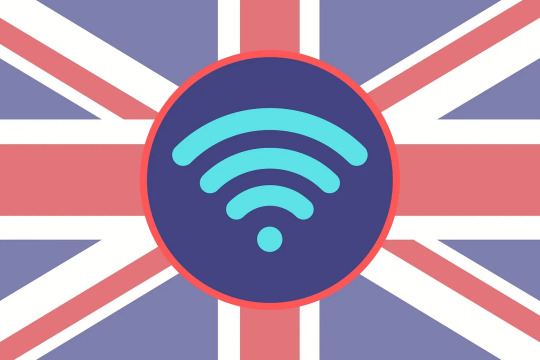
Updated regulations require new properties to be built with gigabit broadband connections and make it easier to install into existing blocks of flats across the UK. Connection costs will be capped at £2,000 per home, and developers must still install gigabit-ready infrastructure (including ducts, chambers, and termination points) and the fastest-available connection if they’re unable to secure a gigabit connection within the cost cap
3. US cancer death rate falls 33% since 1991

The rate of people dying from cancer in the United States has continuously declined over the past three decades, according to a new report from the American Cancer Society.
The US cancer death rate has fallen 33% since 1991, which corresponds to an estimated 3.8 million deaths averted, according to the report, published Thursday in CA: A Cancer Journal for Clinicians. Partly due to advances in treatment, early detection and less smoking, report says
. . .
Thank you for following. You can support this newsletter for less than a price of a cup of coffee:
Support with a coffee ❤️
Let’s continue with the good news…
. . .
4. Lab-grown retinal eye cells make successful connections, open door for clinical trials to treat blindness
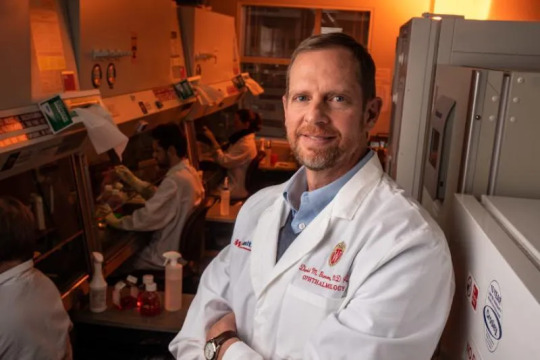
Retinal cells grown from stem cells can reach out and connect with neighbors, according to a new study, completing a “handshake” that may show the cells are ready for trials in humans with degenerative eye disorders.
Over a decade ago, researchers from the University of Wisconsin–Madison developed a way to grow organized clusters of cells, called organoids, that resemble the retina, the light-sensitive tissue at the back of the eye. They coaxed human skin cells reprogrammed to act as stem cells to develop into layers of several types of retinal cells that sense light and ultimately transmit what we see to the brain.
5. The ozone layer is on track to recover in the next 40 years, the United Nations says

The Earth's ozone layer is on its way to recovering, thanks to decades of work to get rid of ozone-damaging chemicals, a panel of international experts backed by the United Nations has found.
The ozone layer serves an important function for living things on Earth. This shield in the stratosphere protects humans and the environment from harmful levels of the sun's ultraviolet radiation. In the latest report on the progress of the Montreal Protocol, the U.N.-backed panel confirmed that nearly 99% of banned ozone-depleting substances have been phased out.
6. Uganda declares an end to Ebola outbreak
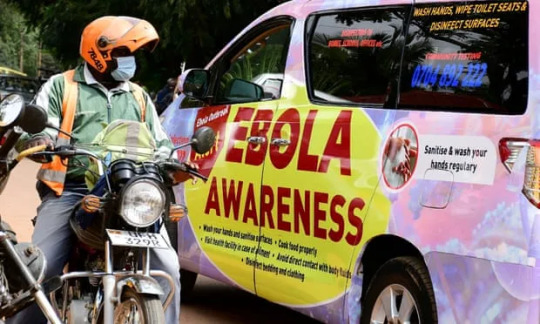
The Ugandan government has declared an end to its Ebola outbreak, less than four months after cases were first reported. Since 20 September, 56 people have died from the virus, which is spread through body fluids, and there have been 142 confirmed infections.
The country has reported no new infections in more than 42 days – twice the maximum incubation period of the virus, a World Health Organization benchmark for a country to be declared Ebola-free.
7. Doggy ‘daycare’ bus in Alaska goes viral on TikTok
Check them out here:
- - -
That's it for this week. If you liked this post you can support this newsletter with a small kofi donation:
Buy me a coffee ❤️
Subscribe for more weekly wholesome news...
469 notes
·
View notes
Text
Badly summarized WIP poll
Thanks @hippiewrites for the open tag I want to do this and @blind-the-winds for creating this game!
Now I have two main WIPs but I have many I haven't touched in years. Or are nothing more than a basic concept with no substance. I'm including them anyway for more options.
I have more than this but I couldn't think of a fun way to describe them.
Alright so @gracehosborn @theelfauthor @buffythevampirelover @little-mouse-gardens @finxi-writes @ohnomybreadsticks @isabellebissonrouthier @thepeculiarbird @queerfox-tales @chauceryfairytales @emberlyric @emabatis y'all can do stuff unless you've already done this it's hard to keep track
Or if you haven't done this yet you can do that too and tag me for an open tag
#writing blog#writers on tumblr#writer things#writing community#writing on tumblr#writers of tumblr#writing poll#badly described wip#wip described badly#wip tag#poll tag#wip poll#writeblr community#writeblr#writing#writers#writer#write#wip meme#wip#my wips
39 notes
·
View notes
Text
The Light in the Storm
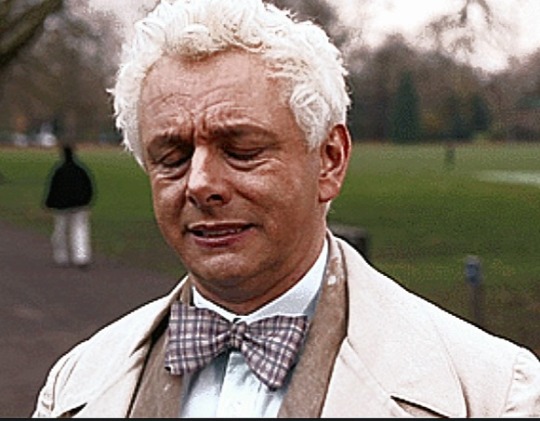
Pairing: Aziraphale x Reader
**I did my best to keep the reader gender-neutral in this one.
Synopsis/Lead Up: Metatron has called Aziraphale back to Heaven leaving you and Crowley to pick up the pieces on Earth. In Heaven, Zirah believes he is making lasting change. Little does he know that things are worse than ever. With Aziraphale preoccupied, the Metatron has a group of angels sent to remove the threat that is Anthony J. Crowley from the playing field… for good. Having fulfilled their task, you are left all alone to pass the time until they come for you too. Unable to move forward, and unwilling to let Heaven dictate how you’ll leave this world, you vowed to avenge Crowley’s death. Using any means necessary, you lured the angels away from society. With no one around to see the carnage, you eliminate those who took your demon (and your angel) from you.
Warnings: Mentions of suicide/taking one’s life through holy water + blood + illusion to torture/murder + Dark fic (with just a little comfort at the end) + grief
A/N: This is kinda dark, so please use some caution when reading it. There is some comfort in the end and the reader does survive the ordeal. Additionally, for this fic, the reader is a demon that has been living with Aziraphale and Crowley for 1000s of years. Also, the reader uses some type of blade that can make an angel bleed but it also kills them if they are stabbed (think Supernatural kinda… but not really). And, as always, I apologize for any mistakes.
Driving rain pelted the windows leaving all that sat in the darkness beyond the thin glass in shadows. The tiny cabin groaned in agony as heavy-handed gusts beat against it. Hours had passed since the storm began to rage and it showed no visible signs of slowing. The lights flickered nervously as though trembling in the wake of the lightning and its ever-consistent partner. Thunderous tremors wracked the aging structure filling the deadly still with momentary life, but it wasn’t enough to drive out the oppressive stench of death that gripped the cabin.
A metallic oder clung to the air, its sting was matched only by the warmth of the blood that dripped in heavy lines along your fingertips and pooled in crimson puddles beside your feet. The sharp clatter of a steel blade smacking against the wooden floor echoed alongside the storm as it fell from your grip. Free of its hold, you drifted toward the large window near the front door. Your bare feet struggled to grip the gore-soaked floorboards. Layers of dried and fresh blood mixed in sticky smears and pools. Blankly you stared out the window overlooking the front drive of the cabin.
The white crash of lightning illuminated the muddy drive and the slick black outline of the Bentley parked nearby. You pressed your crimson-stained forehead and palms to the glass letting your eyes slip shut as Crowley's agonized screams sounded violently in your memory. Losing control of your resolve, what remained of your fragile hold on reality slipped away into the abyss. The air inside the room crackled with electricity and the stink of ozone overpowered the omnipresent presence of death. Rage tore down the length of your spine as a scream ripped from your lungs. Your head flew back and your body arched. Your arms flung wide, as flaming red light radiated in waves from your body.
Turning away from the window to observe the scene of your slaughter, electricity surged through the tiny space smashing wildly into everything it touched shattering it all beyond repair. Slowly, the strength it took to wield such power drained from your limbs forcing you to the ground. Your knees crashed into what remained of the now broken floor with a sickening crunch. Pain radiated through your body forcing the rest of the air from your depleted lungs.
Gasping, your shoulders heaved and your face came up to meet the sky that now was visible through the broken roof. Icey rain whipped against you, soaking through your bloodstained clothes and drenching your onyx wings. The droplets tried to wash away the ichor that coated your skin, but there was nothing strong enough to wipe away the evidence of your sin.
In a near whisper, you spoke toward Heaven, “Aziraphale, I'm so sorry.” His name was a plea… an unanswered prayer. With eyes shut and nothing left to say you reached into the pocket of your jacket, the material was stuck together with blood and water. Delicately you gripped the vial, its weight was hardly enough to register. Freeing it from its hiding spot, you worked blindly to remove the cork, allowing it to drop from your fingers.
With an unsteady hand, you brought the vial of holy water to your lips. Heaving a ragged breath you moved to tip it back, but the soft touch of another forced you to halt. Your eyes snapped open, and the vision before you was too much to fathom. Aziraphale knelt in the wreckage, the bloody water staining the creamy white of his suit an jarring scarlet as his hand wrapped softly around your wrist preventing you from ending it all.
“Aziraphale…” his name fumbled from your lips in a daze. Your free hand came up to caress his face. Tracing along the curve of his cheek, your head swam still unable to believe that he was real. Letting go of the touch, you sat stone still.
Taking advantage of your distraction, he carefully slid the vial from your grip and replaced the cork before slipping it inside his jacket. With both hands free, he pulled you close. Settling a wide palm on your waist, he watched as your eyes fell to where he touched you. Needing to see you more clearly, he cupped your face, guiding you gently to look at him.
The piercing blue of his eyes met the dead black of yours. Nothing human remained in your gaze as he held your focus on him. Tenderly, his thumb swept in an arc along your cheekbone smearing a streak of gore.
“My dear…” Zirah's voice faltered.
Tilting your head, your eyes swept over the angel taking in his soft edges and heartbroken countenance. Whispering, Aziraphale spoke your name. The sound of it seemed to stir something dormant inside of you. Raising your hands, you pushed against his chest testing the sturdiness of him beneath your touch.
“Aziraphale?” Yet again you spoke his name.
“It's me, I'm here.” Aziraphale's hands settled on top of yours, dulling the tremble as you held onto him for dear life.
Hearing his response, your eyes locked in on him. The dazed stupor gave way to bone-deep agony. You gripped his lapels violently, bunching the fabric in your fists as you began rocking back and forth in anguish. A guttural moaning cry rumbled deep in your chest as the pain and grief became too heavy to hold.
Leaning forward, you rested your forehead on his chest as his strong arms encircled your body and pressed you tightly to him. The force of your sobs shook the pair of you, but it didn't matter, he wasn't letting you go… not this time… not after all this. There was no Heaven or Hell, there was just you and him. He'd made the mistake of leaving before and it had cost him dearly. And he'd be damned before he'd lose you too.
#aziraphale fanfiction#good omens#good omens fic#aziraphale x you#Aziraphale x reader#Aziraphale x you
19 notes
·
View notes
Text

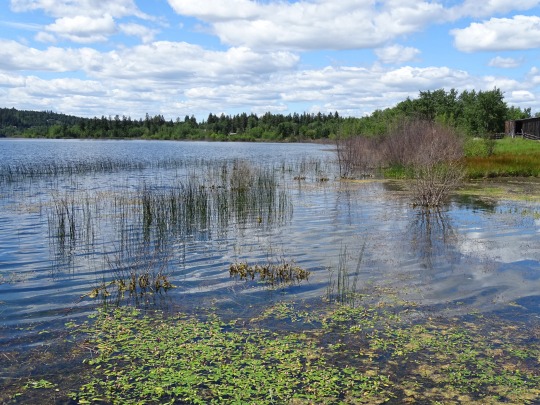
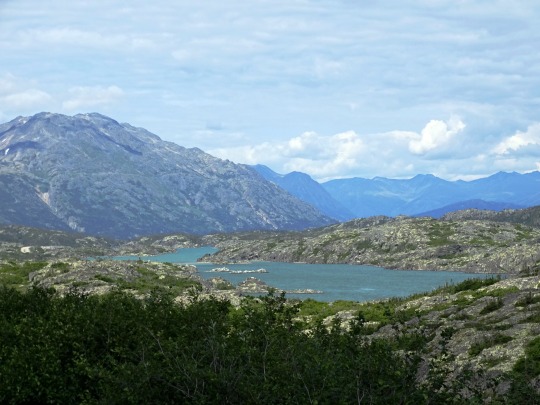


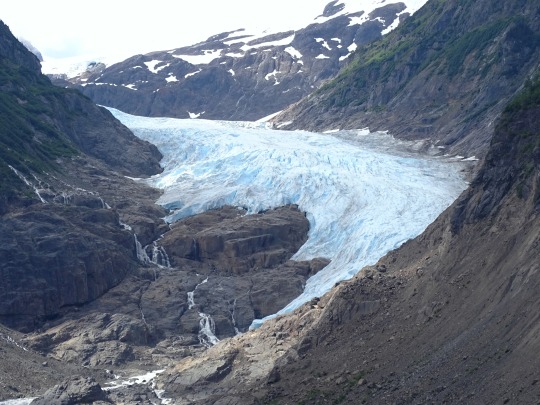


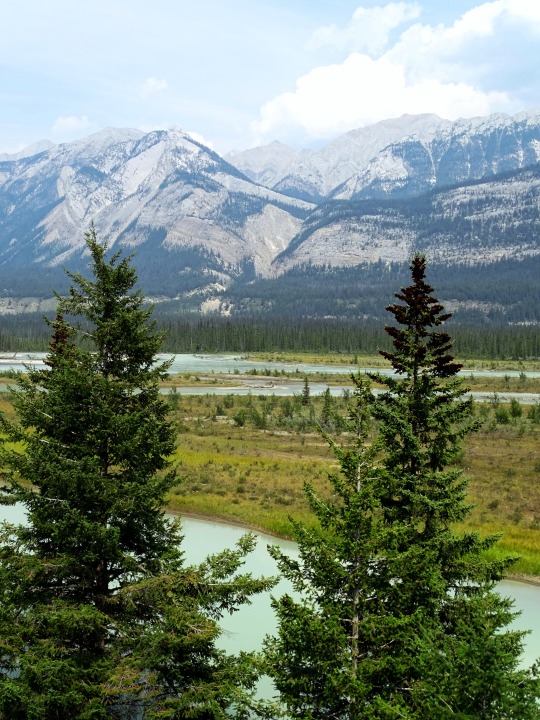


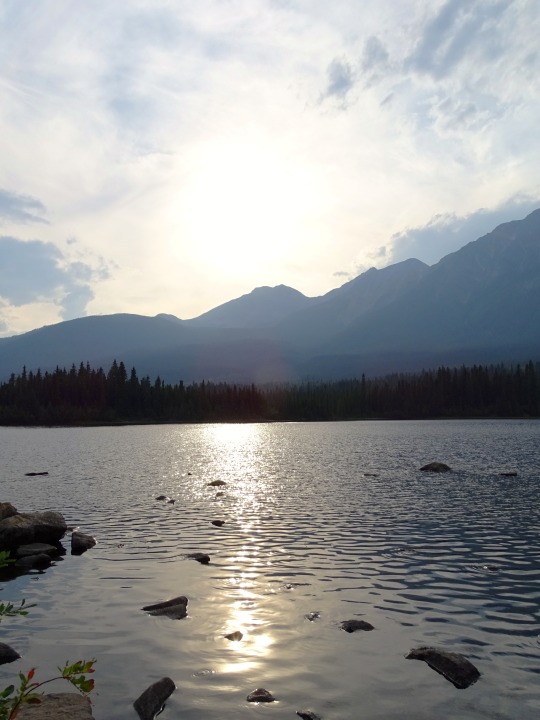



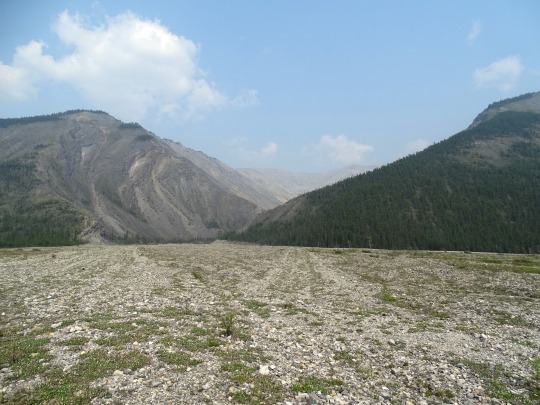

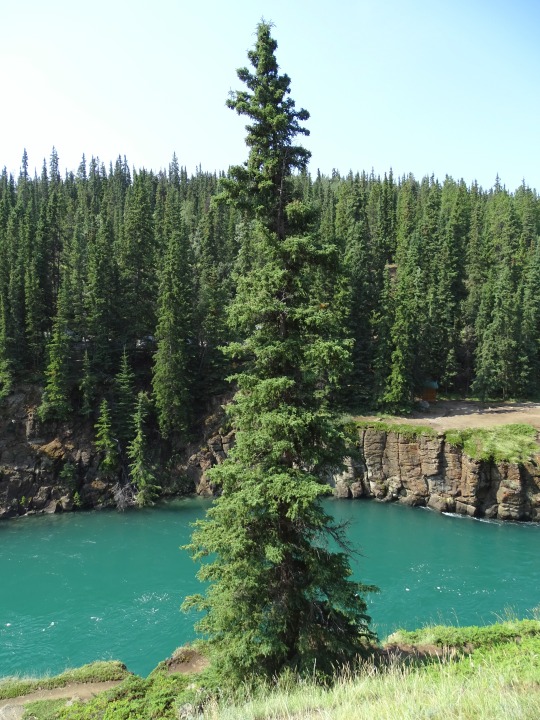
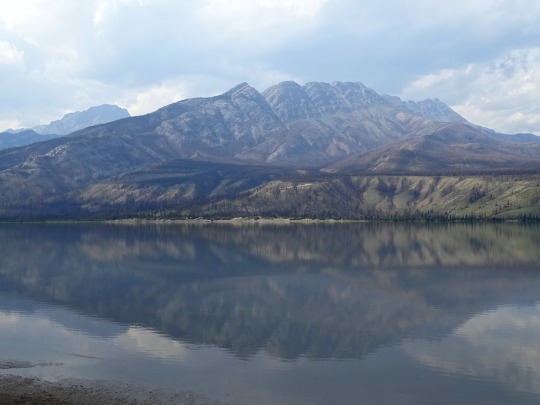

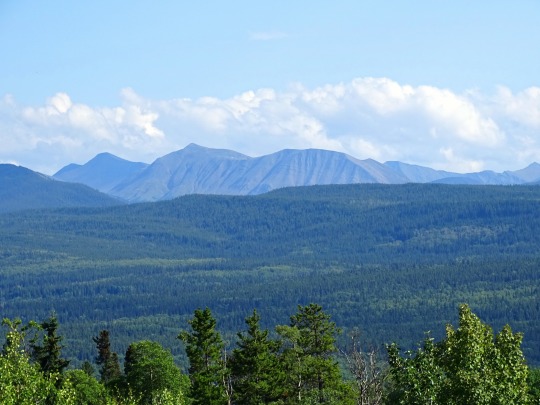
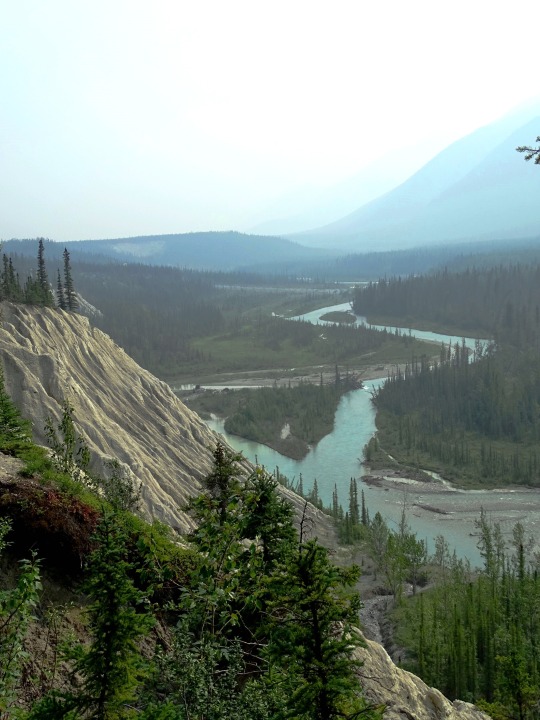
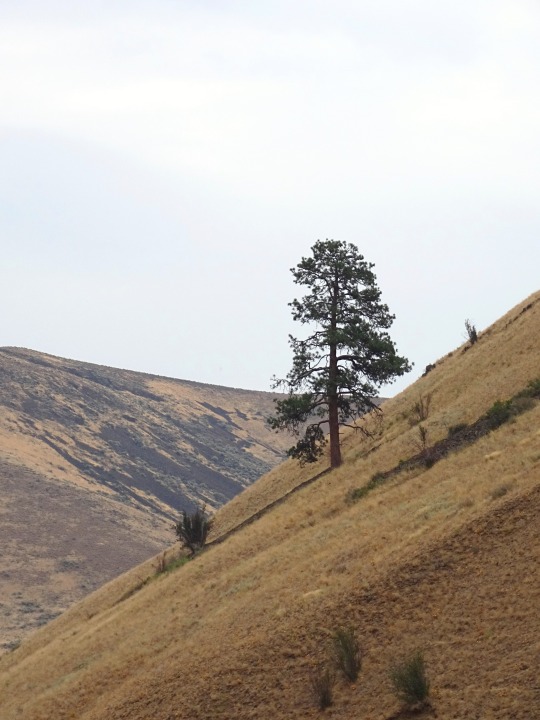
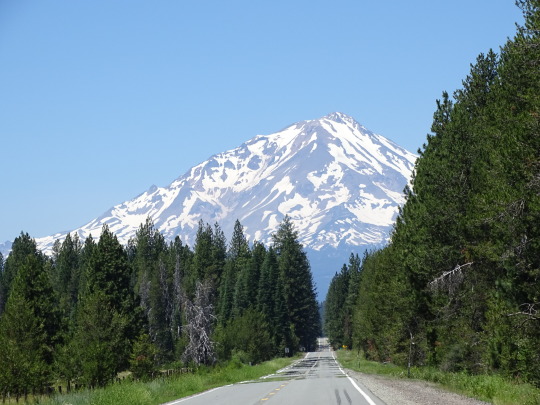

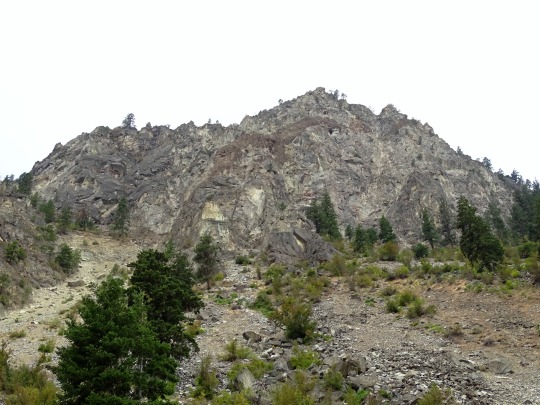


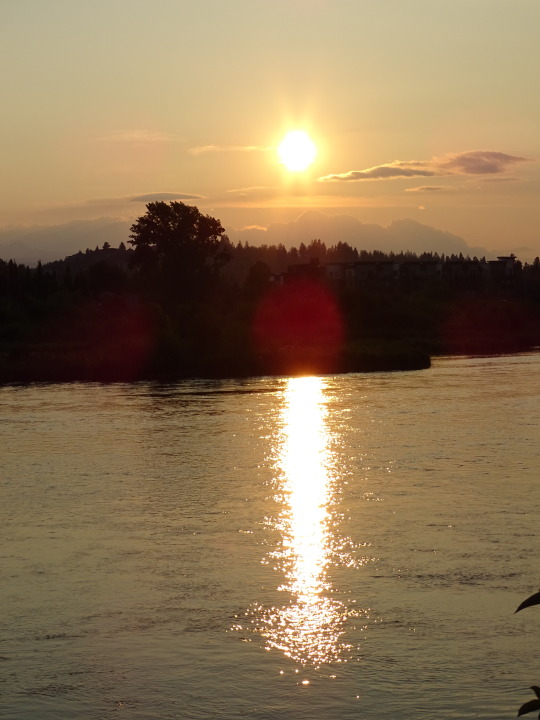

Earth Day
As threats to the Earth grow, so too do the global initiatives that seek to preserve it, whether through volunteer work, donations, or political lobbying.
Earth, due to human activity, is in trouble. The ozone layer is depleting, ecosystems are being lost and people are starving and dying of dehydration. Endangered species are disappearing rapidly, our water and air is becoming increasingly polluted, and weather systems are being pushed to the extreme.
A scary picture indeed, but thankfully one we can all do something about! Earth Day, one of the first global initiatives to protect and conserve the earth, has become an annual event that strives for positive change on a global scale. It aims to inspire individuals, communities, businesses and governments all over the world to take action and help preserve the planet.
History of Earth Day
As the world’s largest environmental movement and the most widely celebrated secular occasion, with over 1 billion people and more than 75,000 partners involved each year across almost 200 countries, Earth Day has gone from strength to strength over the course of its history.
Founder Gaylord Nelson, a former US senator, thought of the idea after witnessing the 1969 oil spill in Santa Barbara, California. Inspired by the vigor of the student anti-war movement, he believed it was essential that energy was shifted to concerns about air and water pollution.
Originally envisioned as a campus teach-in event, Senator Nelson enlisted youth activist Denis Hayes to help organize the first Earth Day in 1970, and the pair opted for 22 April due to where it fell in the academic year, ensuring that the maximum number of students would be able to take part.
Nelson, Hayes and their team were able to spread the message far and wide, including to the national media, and promote events across the US. The occasion was a massive success, with 20 million Americans taking to the streets to celebrate the first Earth Day. They demonstrated in support of the cause, and groups that had previously been rallying around environmental issues separately came together on the day due to their shared values.
The first Earth Day helped put environmental protection on the political agenda and bring about change. That same year the United States Environmental Protection Agency was set up, and soon after various legislation was passed, including the Clean Air, Clean Water and Endangered Species Acts.
It wasn’t until 1990 that Earth Day went global, spreading the message to 200 million people in over 140 countries. By the millennium it had reached more than 180 countries and involved hundreds of millions of participants worldwide. And of course the year 2020 marked the 50th anniversary of Earth Day.
2016’s Earth Day was a particularly special year, as it heralded the United Nations’ adoption of the Paris Agreement. Signed by 175 countries, this international treaty established legally binding targets for tackling the climate emergency, ensuring that as many nations as possible are working together to cut emissions and prevent global warming.
As a day of action, Earth Day aims to promote environmentalism through engagement, activism, education, policy changes and peaceful protest. It has focused on various themes over the years, such as climate change, trees, clean water and a healthy environment for children, and multiple organizations and venues host events that showcase the importance of caring for the environment.
This vital day teaches people about the consequences of their behavior on the places and ecosystems in which they live. And it’s not just about the damaging effects on the environment itself, but also about the impact on people’s health, access to food and water, safety and livelihoods. To get involved, people choose to make conscientious changes such as recycling more, using renewable fuel and conserving water.
Earth Day Timeline
1962
Rachel Carlson releases book Silent Spring
Raising public awareness for the plight of living organisms, Silent Spring makes its way up the New York Times bestseller list and sells more than ½ million copies in at least 24 countries.
1970
First Earth Day is celebrated
After witnessing a massive oil spill in California, Senator Gaylord Nelson from Wisconsin announces the idea of a teach-in on college campuses, choosing April 22 to fall between spring break and final exams to gain as much participation as possible. This bi-partisan event engaged 20 million Americans in working to protect the planet.
1990
Earth Day takes on the globe
Taking Earth Day around the world, just 20 years after the original event the participation increased ten-fold to include 200 million people from at least 140 countries.
1992
United Nations Earth Summit takes place
The United Nations Conference on Environment and Development (UNCED) meets in Rio de Janeiro to address issues of sustainability and provide opportunities for collaboration around the topic.
2000
Earth Day reaches record numbers
In celebration of the new millennium and the 30th anniversary of the observance, Earth Day includes 5000 environmental groups from 184 countries with activities all over the world.
How to celebrate Earth Day
There are a whole host of activities you can get involved in to mark this important occasion, not only around the globe but even in space! The Earth Day website allows people all over the world to find and share events designed to celebrate the day, from presentations and film screenings to cleanups and conservation efforts. This means that Earth Day enthusiasts can join things local to them or on the other side of the planet! And NASA often hosts an event from the International Space Station, for example livestreaming the image of our beautiful earth for all to see.
Another great way to celebrate Earth Day is by learning about what your actions do to the environment and why maintaining the earth’s ecosystems is vital to our survival. There’s a myriad of online resources – articles, quizzes, documentaries and so much more – to help us all find out more about our precious planet and the role we can play in protecting it.
If you feel able, why not donate money via Earth Day’s official website or to another environmental charity such as Greenpeace, the Rainforest Alliance or the Union of Concerned Scientists? Your support will help with a whole range of campaigns and projects, including pushing governments and businesses towards more environmentally friendly policies, preventing damaging practices such as deforestation and mining for fossil fuels and protecting those communities most vulnerable to the effects of climate change. You could also volunteer for local environmental groups and really make a difference where you live.
Above all, this occasion shouldn’t just be about one day, but rather a regular habit! Even the simplest of changes to our lifestyle can make a real difference. Switch to using an eco-friendly search engine, buy fruit and veg from the shop that isn’t wrapped in plastic, and put on an extra jumper rather than turning on the heating.
If you’re serious about the planet, then there’s plenty more you can do to live in a greener, more sustainable way, including powering your home with renewable energy, cycling and walking more and driving less (or buying an electric vehicle), reducing your meat and seafood consumption, recycling your waste, planting wildflowers in your garden for the bees and butterflies, and ensuring that your financial investments, for example, your pension fund, are contributing to green jobs and a green economy. Be sure to spread the word about National Earth Day through social media and let your friends and family know why protecting the earth is essential to you.
Earth Day FAQs
Is Earth Day international?
Yes! Although it is called Earth Day and it began in the US, the day is now celebrated and observed in a majority of the countries throughout the world–at least 193 countries.
How is Earth Day celebrated?
Individuals, groups, organizations and communities can all celebrate Earth Day by raising awareness, participating in sustainability projects, volunteering, making donations and so much more.
Is Earth Day always on April 22?
Yes! Ever since its inception in 1970, Earth Day has been celebrated annually on April 22. The original idea to reach college students made this the perfect time between spring break and finals.
Who created Earth Day?
Although the stage was set at the 1969 UNESCO Conference in San Francisco, the execution of the day can be credited to US Senator Gaylord Nelson who proposed an environmentally focused day for college campuses. The idea grew from there.
Where did Earth Day start?
The first ideas for Earth Day were formulated in the United States and meant to be observed as “teach-ins” on college campuses, but the idea quickly grew and it eventually turned into an international day including most of the countries on the planet.
Source
#travel#vacation#tourist attraction#landmark#InternationalMotherEarthDay#EarthDay#Earth Day#22 April#original photography#cityscape#landscape#countryside#Rocky Mountains#Alberta's Rockies#Northern Rockies#Canada#Alberta#Yukon#British Columbia#Oregon#Washington#California#USA#summer 2023#Jasper National Park#nature#flora
15 notes
·
View notes
Text
The Antarctic – is it still an ozone no-go zone?
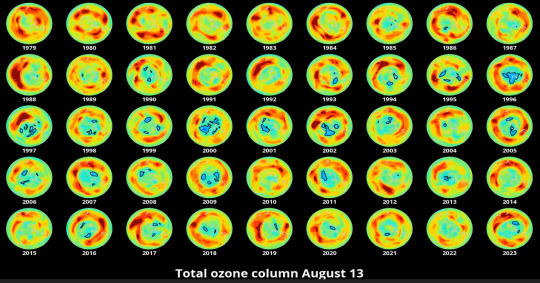
A hole in the ozone layer does still appear above the Antarctic each year, but thanks to the Montreal Protocol it has been slowly improving since the year 2000.
The hole in the ozone layer appears during the Antarctic springtime because extreme cold and strong winds create a polar vortex over the region. This speeds up the mechanism by which the ODS present in the stratosphere destroy ozone. In years where these conditions last longer than average, ozone depletion will also last longer – a potential cause for the unusually large and persistent ozone holes we have seen in the last few years, including in 2023.
This year’s early appearance of the ozone hole (which has now stabilised at around the 1990-2010 average) might also be linked to the 2022 eruption of the Hunga Tonga-Hunga Ha’apai volcano, which injected an unprecedented amount of water vapour into the atmosphere, possibly speeding up the chemical processes that cause ozone depletion.
While the past few years have reminded us that we can’t be complacent about ozone recovery, we need to be clear that they don’t imply that the Montreal Protocol is not working. On the contrary, the ozone holes we have seen in recent years would have been much worse without the Protocol and the ozone layer is still on track to recover.
Over the Antarctic, the ozone layer is expected to recover to its 1980 levels (before the appearance of the ozone hole) by about 2066. In other places, recovery is expected even sooner.
#stratospheric ozone#ozone hole#montreal protocol#ozone layer protection#ozone depleting substances#ozone recovery
1 note
·
View note
Text
Plugging that boy's hole like I'm the Montreal Protocol on Substances that Deplete the Ozone Layer
15 notes
·
View notes
Text

Someone posted this on a Facebook account. Facebook had slapped the old "False information" image blocking thing over it. I share it here because it isn't false. I literally remember being in school in 1979 and having my teacher Mr. Chavez (who looked just like Rob Reiner's character from All in the Family and was just as far Left) telling all of us 2nd graders that by the time we were his age California would be so cold we wouldn't be able to grow citrus fruits or grapes anymore. I also remember Mr. Barry, my 6th grade physical science teacher (he wore a Greenpeace bracelet every day) going on and on about acid rain. In High School it was the biology teacher Ms. Hubner, pronouncing doom on humanity due to a depleting ozone layer above our heads.
Facebook can fool people born in the 2ks, but I was there and this all happened. Teachers have been using government funded "science" to try and frighten and indoctrinate kids for decades now.
27 notes
·
View notes